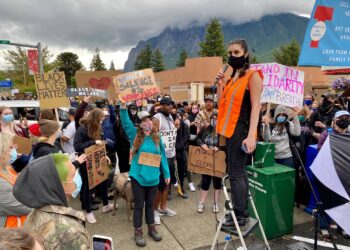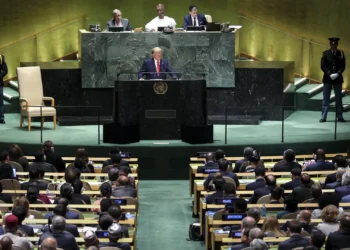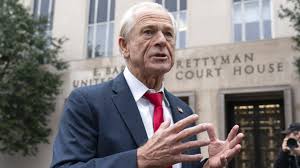President Trump executed a masterclass in diplomacy during Friday’s Alaska summit with Russian President Vladimir Putin, advancing a realistic peace process while the corporate media erupted in predictable tantrums. Amid the globalist fixation on optics, Trump worked nonstop with NATO, EU leaders, and Zelensky to manage the world’s two largest nuclear powers. He understands the stakes, the limits of American intervention, and the real costs—both financial and human—of war, while the media obsessively mocks ceremonial speeches and imagined failures.
On Saturday’s WarRoom, Steve Bannon and Jack Posobiec unpacked the details of the story that the corporate media was refusing to acknowledge.
QUICK CLIP:
Posobiec: Mainstream Media Doesn’t Understand The Shared History And Shared Sacrifice Of The U.S. And Russia @JackPosobiec pic.twitter.com/KAONB7MUmo
— Bannon’s WarRoom (@Bannons_WarRoom) August 16, 2025
According to Posobiec, who was present, the summit revealed what the media refuses to report: shared history and careful strategy are essential to meaningful rapprochement. Putin’s initial remarks highlighted World War II sacrifices, a symbolic gesture of shared history, the press dismissed as irrelevant. Yet Trump recognized its importance for trust and long-term negotiation, bypassing bureaucratic filters and neocon interference.
On the flight back, Trump didn’t rest, according to Posobiec. Trump worked six and a half hours on the phones, coordinating every call with NATO, EU, and Zelensky to maintain continuity. He knows a ceasefire isn’t unilateral; both Russia and Ukraine must agree. Bannon and Posobiec stress that this is process-driven, not a moment for media soundbites or manufactured outrage.
A key takeaway from the summit is the massive financial and strategic stakes. Larry Fink, now in charge of the World Economic Forum, has already indicated plans to funnel American capital and pensions into Ukraine’s reconstruction. Meanwhile, the EU and NATO demand security guarantees equivalent to Article 5—essentially de facto NATO membership—which Putin and Lavrov consider a red line. With millions dead and cities leveled, animosity in Ukraine rivals or exceeds even the West Bank, making naïve assumptions about cooperation or reconciliation dangerous. Trump navigates these realities while globalists push objectives that risk endless conflict, exploiting U.S. troops and resources to achieve goals that have nothing to do with American interests.
This summit is a stark reminder of Trump’s strategic edge. He listens, calculates, and acts, even when the media paints him as a Russian pawn. Historical parallels, from Helsinki to Nixon’s rapprochement with China, show that careful engagement—not spectacle—preserves U.S. power and sets the stage for long-term stability. By releasing RussiaGate documents and exposing Swallowell, Schiff, and others, Trump ensures that prior interference cannot derail current efforts.
Meanwhile, the media meltdown is spectacular. Headlines decry the lack of a ceasefire or symbolic gestures, ignoring the real achievement: Trump is advancing a durable process while the globalist narrative is exposed for what it is—petty, vindictive, and shortsighted. The world sees chaos; Trump sees leverage, history, and opportunity. The takeaway is clear: while the press cries and misreports, Trump gets results.
For the whole conversation between Bannon and Posobiec, watch this full Saturday WarRoom segment:





